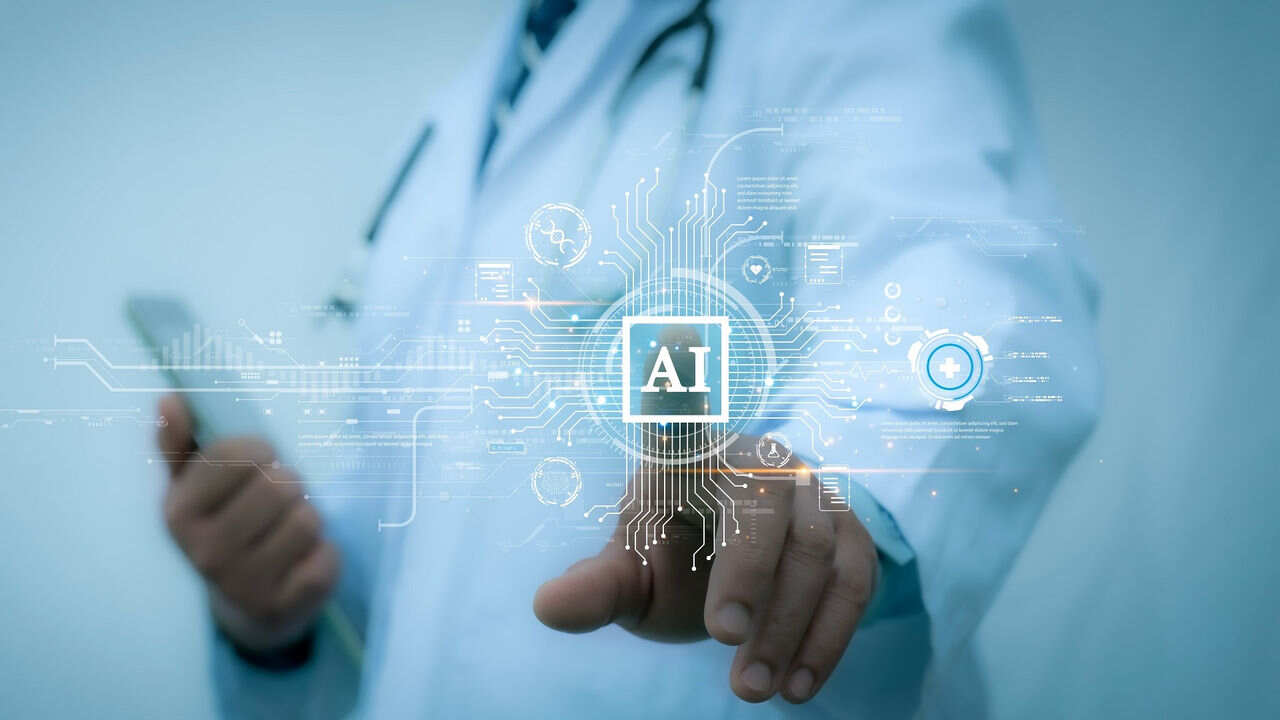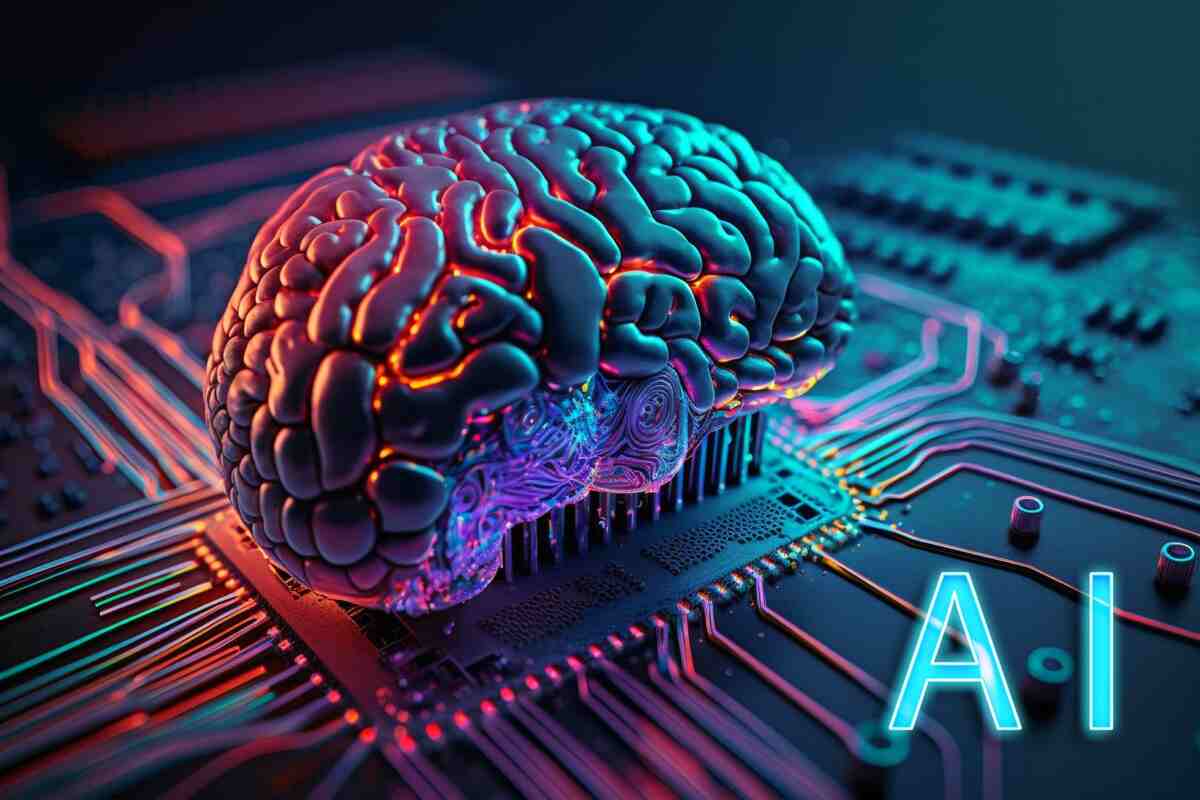Artificial Intelligence (AI) is no longer a concept confined to science fiction; it has become an integral part of our daily lives. From voice assistants like Siri and Alexa to recommendation algorithms on Netflix and Amazon, AI is everywhere. But what exactly is AI, and how does it work? If you’re new to the world of AI, this guide will help you understand the basics of artificial intelligence, its applications, and its impact on our lives.
What is Artificial Intelligence?
Artificial Intelligence, commonly referred to as AI, is the simulation of human intelligence by machines. AI systems are designed to mimic human cognitive functions such as learning, problem-solving, reasoning, perception, and language understanding. AI can perform tasks that typically require human intelligence, enabling machines to think, learn from experience, and adapt to new situations.
You may also read How to Use AI Writing Assistants for Content Creation
Types of Artificial Intelligence
AI can be broadly categorized into three types based on its capabilities:
- Narrow AI (Weak AI): This type of AI is designed to perform specific tasks or solve particular problems. Narrow AI systems are highly specialized and cannot perform tasks outside their designated functions. Examples of narrow AI include virtual assistants like Siri and Google Assistant, facial recognition software, and recommendation algorithms on platforms like Netflix and YouTube.
- General AI (Strong AI): General AI refers to machines that possess the ability to understand, learn, and apply knowledge across various domains, much like a human being. While narrow AI focuses on specific tasks, general AI would have the capacity to think, reason, and solve problems in a wide range of contexts. As of now, general AI remains a theoretical concept and has not been achieved.
- Superintelligent AI: Superintelligent AI represents a level of intelligence that surpasses human capabilities in every aspect, from problem-solving and creativity to social intelligence. This type of AI is purely hypothetical at this stage and is a topic of ongoing debate among researchers and ethicists.
Key Components of AI
To understand AI better, it’s essential to know the key components that form the foundation of AI technologies:
- Machine Learning (ML): Machine Learning is a subset of AI that focuses on developing algorithms and models that enable machines to learn from data. Rather than being explicitly programmed to perform a task, ML models identify patterns and relationships within data to make decisions and predictions. There are several types of machine learning, including supervised learning, unsupervised learning, and reinforcement learning.
- Neural Networks: Neural networks are a type of machine learning model inspired by the human brain. They consist of interconnected nodes (or neurons) organized into layers. Neural networks are particularly effective in tasks like image and speech recognition, natural language processing, and game playing.
- Natural Language Processing (NLP): NLP enables machines to understand, interpret, and generate human language. This technology is used in applications like chatbots, virtual assistants, and language translation tools.
- Computer Vision: Computer vision enables machines to interpret and understand visual information from the world, such as images and videos. It is used in applications like facial recognition, autonomous vehicles, and medical imaging.
- Robotics: Robotics involves the design, construction, and use of robots that can perform tasks autonomously or semi-autonomously. AI is a critical component of modern robotics, enabling robots to navigate environments, recognize objects, and interact with humans.

How Does AI Work?
AI systems work by processing large amounts of data, identifying patterns, and making decisions based on those patterns. Here’s a simplified breakdown of how AI works:
- Data Collection: AI systems require vast amounts of data to learn from. This data can come from various sources, such as text, images, videos, and sensor data.
- Data Processing: Once collected, the data is processed and cleaned to remove any noise or irrelevant information. This step is crucial for ensuring the accuracy of the AI model.
- Training: During the training phase, the AI model is fed the processed data and learns to recognize patterns and relationships within it. The model is adjusted through algorithms that minimize errors and improve accuracy.
- Inference: Once trained, the AI model can make predictions or decisions based on new data. For example, an AI system trained to recognize cats in images can analyze a new photo and determine whether or not it contains a cat.
- Feedback and Improvement: AI models continuously learn from new data and feedback, allowing them to improve their accuracy and performance over time.
Applications of AI in Daily Life
AI has a wide range of applications that impact various aspects of our lives. Here are some of the most common uses of AI:
1. Virtual Assistants
Virtual assistants like Siri, Google Assistant, and Alexa use AI to understand and respond to voice commands. They can perform tasks like setting reminders, playing music, answering questions, and controlling smart home devices.
2. Recommendation Systems
AI-driven recommendation systems are used by platforms like Netflix, Amazon, and Spotify to suggest products, movies, music, and other content based on user preferences and behavior. These systems analyze data to predict what users are likely to enjoy.
3. Autonomous Vehicles
Self-driving cars and drones use AI to navigate, make decisions, and avoid obstacles. AI systems in autonomous vehicles process data from cameras, sensors, and maps to understand their environment and make safe driving decisions.
4. Healthcare
AI is revolutionizing healthcare by assisting in diagnostics, personalized medicine, and drug discovery. AI algorithms can analyze medical images, detect diseases early, and provide treatment recommendations. In addition, AI-powered robots assist in surgeries, making procedures less invasive and more accurate.
5. Finance
In the financial sector, AI is used for fraud detection, algorithmic trading, and customer service. AI-powered chatbots provide instant support to customers, while machine learning models analyze transaction patterns to identify fraudulent activities.
6. Customer Service
Many companies use AI-powered chatbots to handle customer queries and provide support. These chatbots can understand natural language and provide instant responses, improving customer satisfaction and reducing response times.
7. Education
AI is transforming education by offering personalized learning experiences, grading assignments, and even teaching languages. AI-driven platforms like Duolingo use adaptive learning algorithms to customize lessons based on the learner’s progress and performance.
Benefits of AI
AI offers numerous benefits across various industries and sectors:
- Efficiency and Automation: AI can automate repetitive tasks, freeing up human workers to focus on more complex and creative tasks. This leads to increased efficiency and productivity.
- Data Analysis and Insights: AI can analyze vast amounts of data quickly and accurately, providing valuable insights that can inform decision-making. This is particularly useful in fields like finance, healthcare, and marketing.
- Personalization: AI enables personalized experiences by analyzing user behavior and preferences. This is evident in recommendation systems, targeted advertising, and personalized learning platforms.
- Improved Accuracy: AI algorithms can perform tasks with a high degree of accuracy, reducing the risk of human error. This is especially important in fields like healthcare, where accurate diagnoses can save lives.
- 24/7 Availability: AI systems can operate around the clock without fatigue, providing services and support at any time of day. This is beneficial for customer service, where instant responses are expected.
Challenges and Limitations of AI
Despite its many benefits, AI also has its challenges and limitations:
- Data Privacy and Security: AI systems rely on vast amounts of data, raising concerns about data privacy and security. Ensuring that AI systems handle data responsibly and securely is critical.
- Bias and Fairness: AI models can inadvertently learn biases present in the data they are trained on. This can lead to unfair or discriminatory outcomes, particularly in areas like hiring, lending, and law enforcement.
- Lack of Common Sense: AI systems lack common sense reasoning and often struggle with tasks that require an understanding of context, cultural nuances, or emotional intelligence.
- Dependence on Data: AI is highly dependent on data quality and quantity. Poor-quality data can lead to inaccurate or unreliable AI models.
- Ethical Concerns: The development and deployment of AI raise several ethical concerns, such as job displacement, surveillance, and decision-making transparency. Addressing these concerns requires careful consideration and regulation.

The Future of AI
The future of AI holds enormous potential, but it also presents challenges that must be carefully managed. As AI continues to advance, it is expected to play an even more significant role in various industries, from healthcare and finance to education and entertainment.
Here are some trends shaping the future of AI:
- Explainable AI: As AI systems become more complex, there is a growing demand for transparency and accountability. Explainable AI aims to make AI decision-making more understandable to humans, ensuring that AI systems are fair and trustworthy.
- AI Ethics and Regulation: Governments and organizations are increasingly focusing on the ethical implications of AI. Regulations are being developed to ensure that AI is used responsibly and ethically.
- AI in Healthcare: AI is expected to revolutionize healthcare further by improving diagnostics, personalized medicine, and patient care. AI-driven tools will help detect diseases early, develop new treatments, and optimize healthcare delivery.
- Human-AI Collaboration: The future will see more collaboration between humans and AI, with AI taking on routine and repetitive tasks while humans focus on creative, strategic, and interpersonal work.
- AI in Education: AI will continue to transform education by offering personalized learning experiences, automating administrative tasks, and providing real-time feedback to learners.
Getting Started with AI: Tips for Beginners
If you’re new to AI and want to learn more, here are some steps to get started:
- Educate Yourself: Start by learning the basics of AI through online courses, books, or articles. Understanding the fundamental concepts, such as machine learning, neural networks, and natural language processing, will provide a solid foundation.
- Experiment with AI Tools: Try out AI tools and platforms like Google’s TensorFlow, IBM Watson, or Microsoft’s Azure AI. These platforms offer free resources, tutorials, and tools to help you understand AI’s practical applications.
- Stay Informed: Keep up with the latest developments in AI by following reputable blogs, research papers, and news outlets. AI is a rapidly evolving field, and staying informed will help you understand new trends and technologies.
- Join AI Communities: Participate in AI communities and forums to connect with like-minded individuals, share knowledge, and learn from others. Communities like GitHub, Stack Overflow, and Reddit have active AI discussions.
- Start Small: Begin with small projects to apply your AI knowledge. For example, try building a simple chatbot, experimenting with machine learning models, or analyzing a dataset. Practical experience is invaluable for learning AI.
Conclusion: Embracing AI for a Smarter Future
Artificial Intelligence is reshaping the world around us, offering new opportunities and challenges. Understanding the basics of AI is essential for anyone looking to navigate the rapidly changing technological landscape. By learning about AI and its applications, you can better prepare for a future where AI will play an increasingly important role in various aspects of life.
Whether you are a beginner or an experienced professional, now is the time to learn about AI and consider how it can benefit your career, business, or personal interests. The journey into the world of AI is just beginning, and the possibilities are endless.

